NASA James Webb Telescope Launch A Make-or-break Moment For Anxious Astronomers

NASA James Webb telescope launch a make-or-break moment for anxious astronomers
Right now, astronomers worldwide are breaking a sweat, gritting their teeth and knocking on wood every time someone mentions one very special telescope -- the James Webb Space Telescope. This piece of machinery is like no other.
Even though we, the universe's conscious corner, have mapped out stars, galaxies and black holes of almost unfathomable scale, an infinitely large region has remained invisible to human eyes. Twenty years ago, a crew of aerospace engineers started constructing Webb as a hyper-complex way to get past our mere-mortal restrictions.
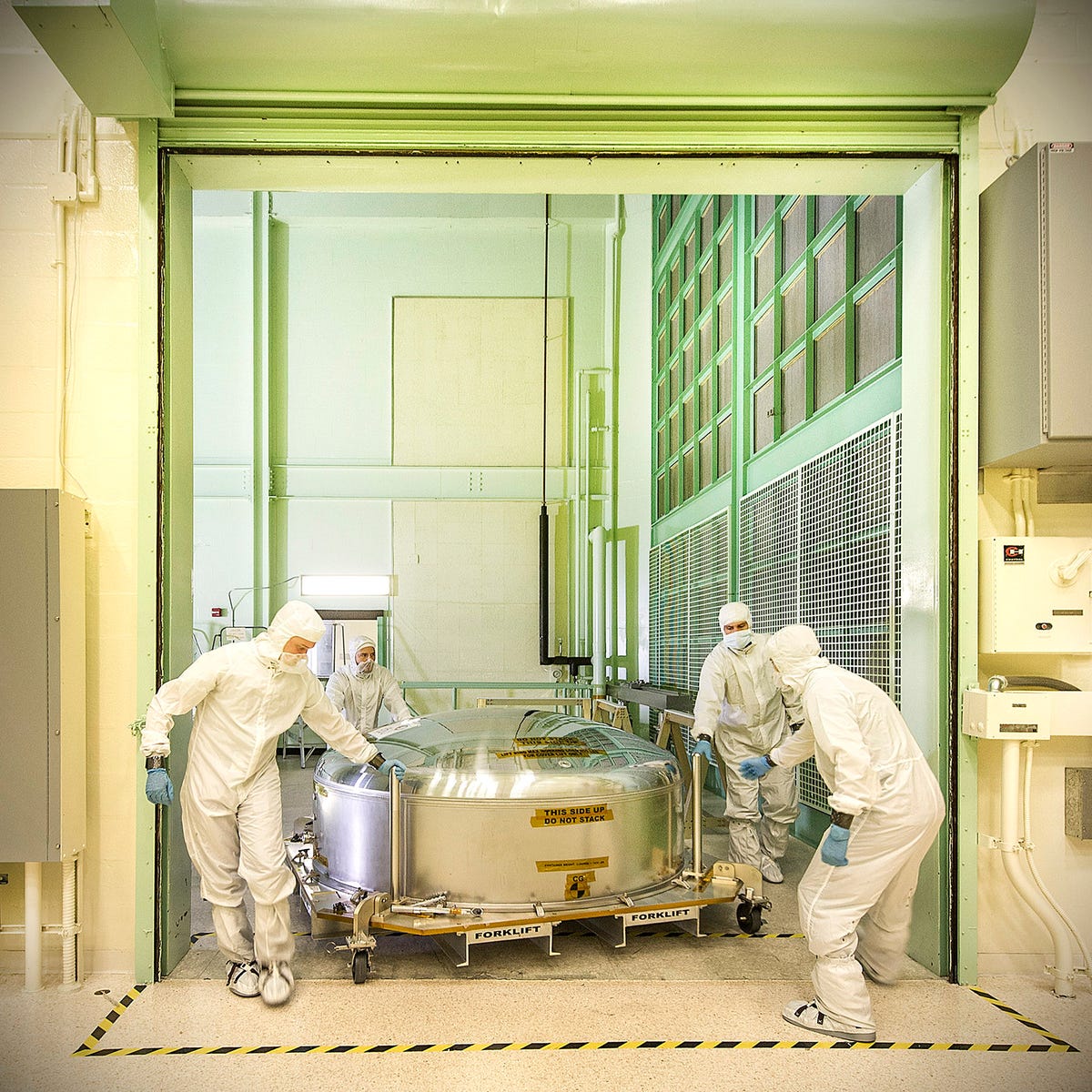
The James Webb Space Telescope ETU (engineering test unit) primary mirror segment returning to the cleanroom at NASA Goddard.
NASA/Chris Gunn"I heard one person say it's a good thing we have a lot of young people working on this, because they just don't know how impossibly hard [building] this is going to be," said Alison Nordt, the space science and instrumentation director at aerospace giant Lockheed Martin, who has been a part of the Webb team since the beginning.
Two decades, more than $10 billion, a series of delays and an unending well of brilliant craftwork later, the largest and most powerful telescope ever built by NASA is finally nearing its launch date.
Everyone involved is standing at the crossover between excitement and anxiety.
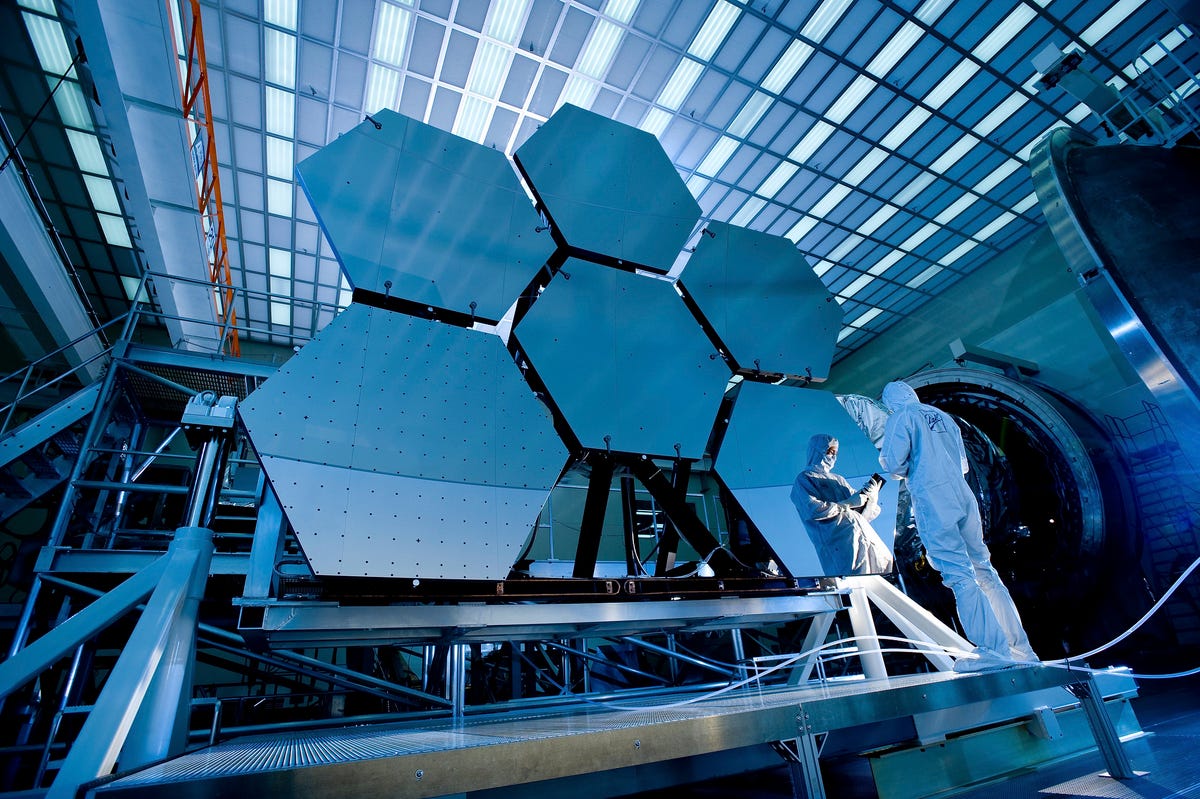
Ball Aerospace's Jake Lewis is reflected in one of the mirrors in the James Webb Space Telescope Array that was in the X-ray and cryogenic facility for testing.
NASA/MSFC/David Higginbotham/Emmett Given"I can't tell you how many nights I would wake up just figuring out, how do I tolerance a bolt to make sure it is straight enough that I can put it into the very, very tight hole I have to put it in, yet make it manufacturable?" Nordt said. And these bolts cannot chip at all, even at the freezing temperatures Webb will experience in space. This telescope's mechanics are precise.
When you take into consideration the scrutiny every minor detail this cutting-edge observatory went through, it's essentially a work of art. "We learned how to bond single crystal optics that would survive at cryogenic temperatures," Nordt said. "I mean, nobody thought that could be done. There are examples like that throughout the entire observatory."
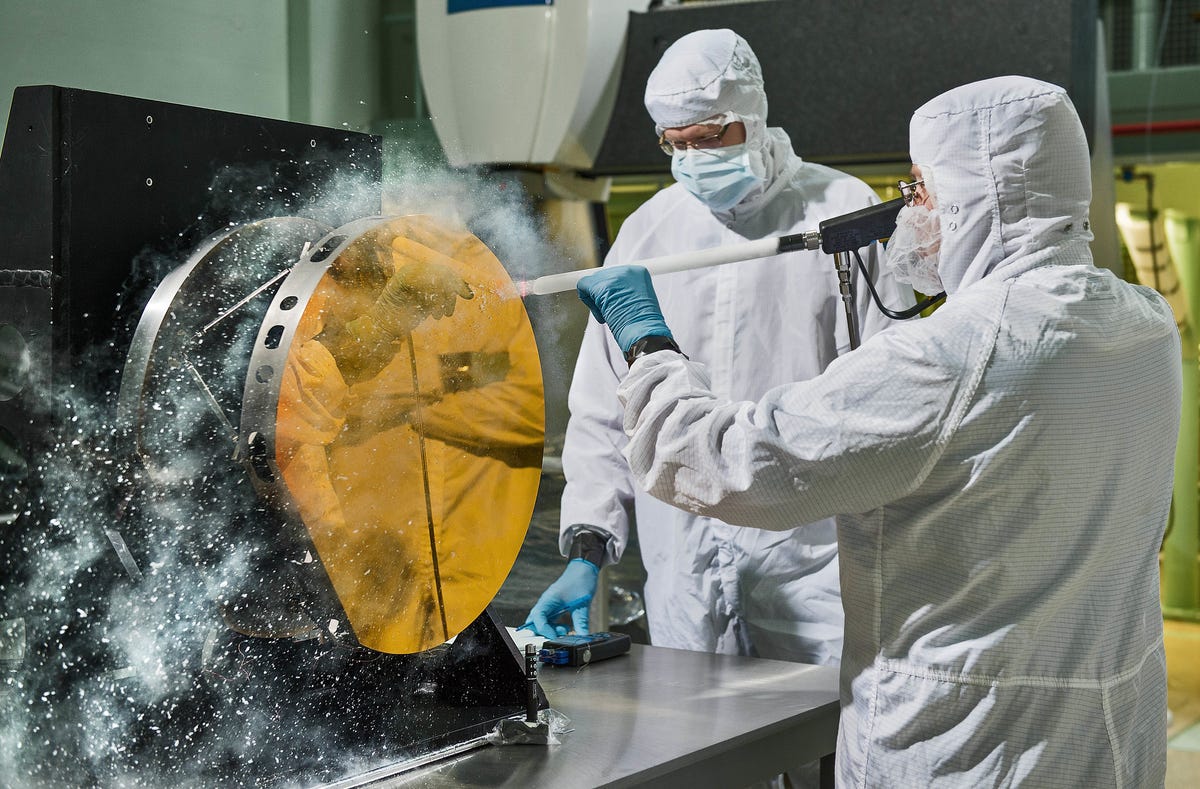
By shooting carbon dioxide snow at the surface, engineers are able to clean large telescope mirrors without scratching them.
NASA/Chris GunnSoon, every inch of Webb's meticulous engineering will be blasted into space. After a much anticipated countdown, we'll be witnessing either the first day of the future of astronomy or the end of a 20-year dream.
If you're not on the edge of your seat yet, here's why you should be.
It all hinges on the NIRCam
First off, Webb's holy grail: the near-infrared camera, or NIRCam. It has two critical duties. It'll lead the 10-year-long scientific data mission and help with the deployment sequence. "If NIRCam doesn't work, the telescope doesn't work," Nordt said.
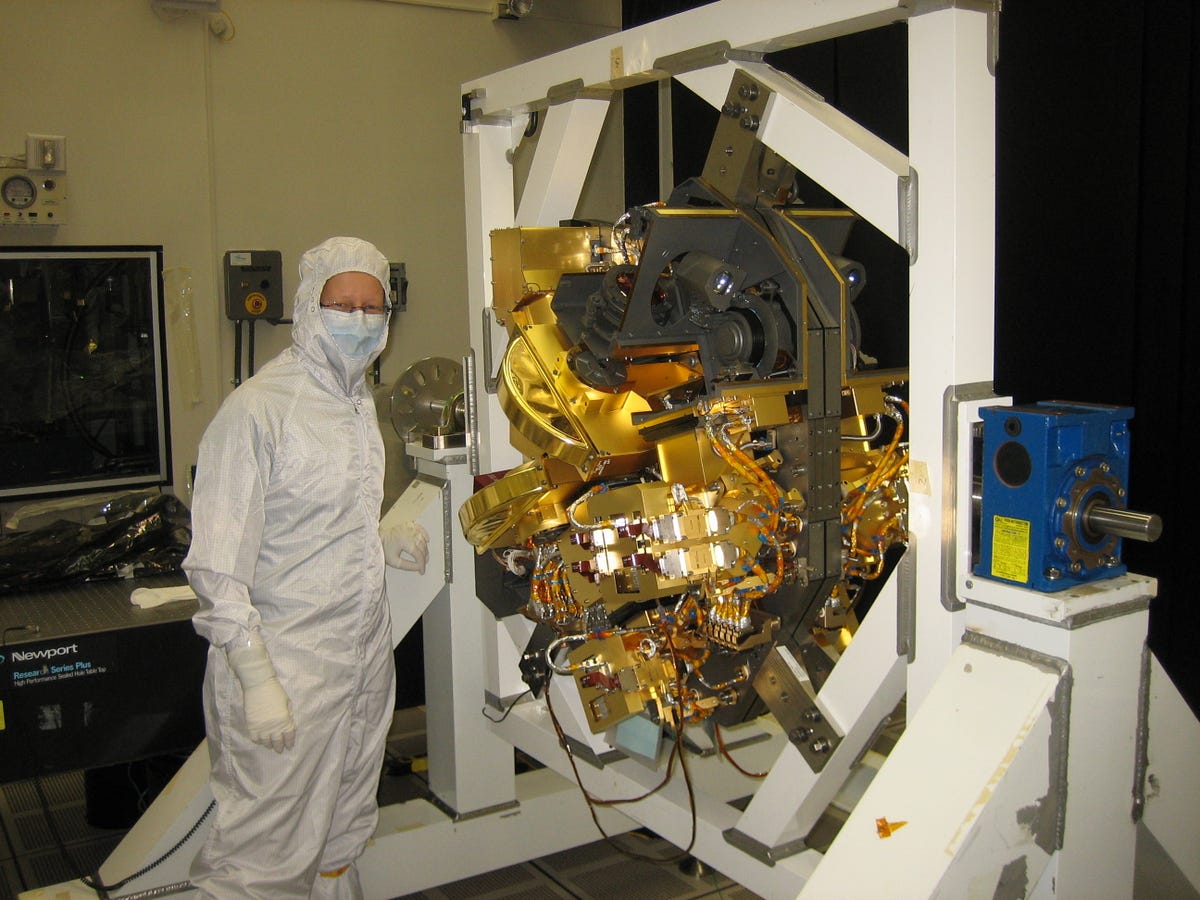
Lockheed Martin engineer Alison Nordt works on Webb's NIRCam.
Lockheed MartinWebb promises to provide a fresh look at the universe because it can detect infrared light. Invisible to the human eye, infrared light occupies a separate spot on the electromagnetic spectrum from visible, blue light.
As the universe expands, wavelengths of light from stars and galaxies stretch out like rubber bands. Narrow, pointy blue waves start elongating into drawn-out, flatter red waves. Eventually, as those red waves become even longer, they enter the infrared region. The phenomenon is called redshift.
Because the early universe is the part of space farthest from Earth, the signals that make it back to our planet are in the infrared region. With NIRCam, Webb detects that light and thus can reveal to us a ton of information about the universe's oldest galaxies and stars.
It'll show us things we have never seen before.

A timeline of the universe. Webb will offer us access to the region before the dark ages.
NASAPlus, redshift can help us understand how far away a cosmic object is. Scientists can measure the exact wavelength structure of a star or galaxy, place it on the spectrum accordingly and compare relative distance. That'll show us "whether we really hit something that's very, very old or only a couple billion years old," Nordt said.
The predecessor to James Webb, NASA's workhorse Hubble telescope, also has infrared imaging capabilities, and the cosmic phenomena it has captured in infrared light are stunningly beautiful. But because Hubble wasn't made with infrared processing in mind, it doesn't have a very big "light collector," which is basically a mirror, and is restricted by its temperature settings.
How Webb differs from Hubble
The primary mirror on Hubble is 2.4 meters (7.9 feet) in diameter, about the height of a household Christmas tree. The primary mirror on Webb is almost three times larger, at 6.5 meters in diameter. In fact, Webb's mirror actually consists of 18 segments adjustable for optimal light collection. NASA aptly calls it the "light bucket."

The 18-section mirror of the James Webb Space Telescope.
NASA/Desiree Stover"When you're talking about any astrophysics type of telescope, you are looking at very distant objects. And this one is looking at the most distant objects that are in the universe," Nordt said of Webb. "There are very few photons, there's not a lot of light coming from them, and the larger your primary mirror, the more light you can collect."
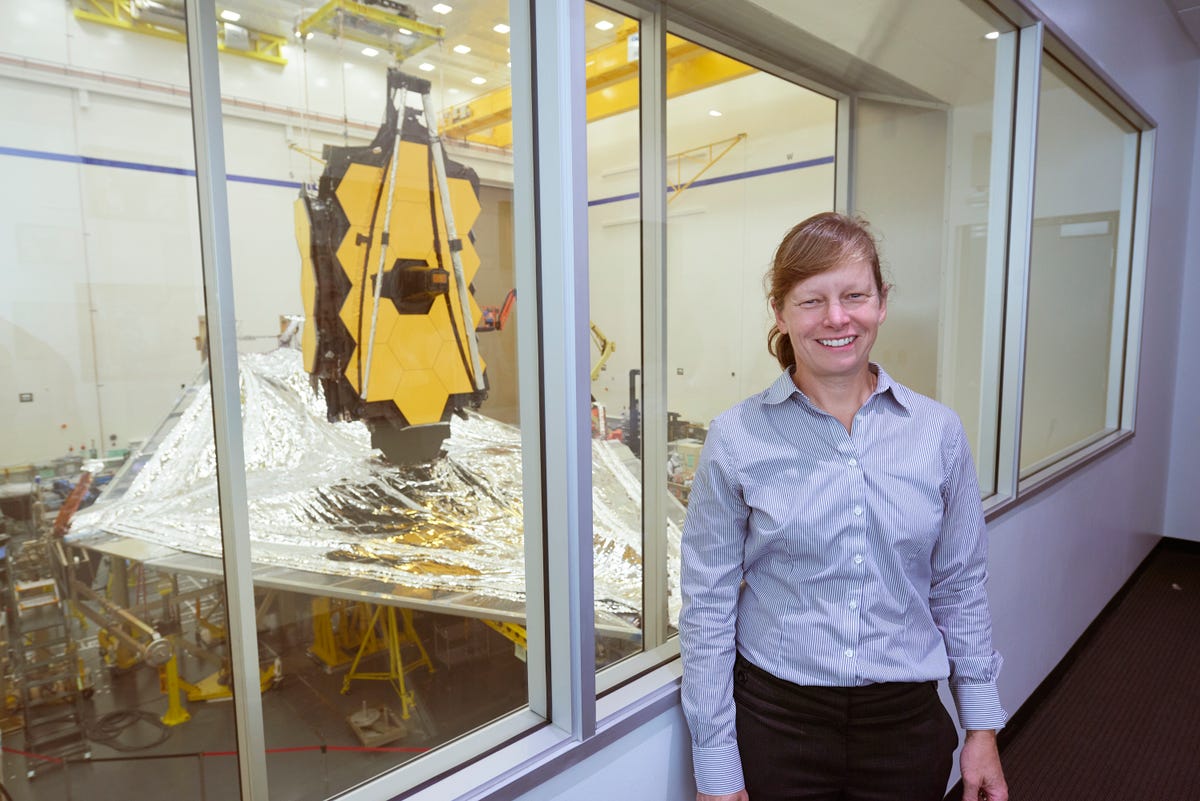
Alison Nordt standing in front of an in-progress Webb.
Lockheed MartinIn addition, Hubble operates at room temperature, which poses a separate issue for infrared light collection because infrared light is actually heat radiation. That means anything warm emits infrared light as well.
"If you imagine looking at a telescope at night with your own eyes, and someone shines a floodlight in your eyes, you can't see very well," Nordt said. "So if you have a telescope that's dedicated to infrared and you have it at room temperature, then it gets flooded by its own light, which is its own heat."
Webb, on the other hand, is icy cold at 37 Kelvin (minus 393 degrees Fahrenheit), so it can detect much longer wavelengths and with greater clarity than Hubble.
Getting the mirrors right
Webb's remarkable infrared capabilities bring us to part two of NIRCam's job. "Before it can do the science, it has to be a wave front sensor," Nordt said. "That's the fancy name for: It has to detect how messed up the primary mirror is and how to fix it."
Right now, Webb is at the tip of an Ariane 5 rocket in French Guiana, folded up origami-style. Once it exits our atmosphere and enters space, it'll have to cool down to its freezing temperature and unfold its 18 mirrors. But here's the issue. The mirrors have to align.
"They all have to act like one mirror," Nordt said. "When you fold it up, you shake it a lot, you send it up into space, you take gravity away and you cool it down, it's not gonna be in alignment."
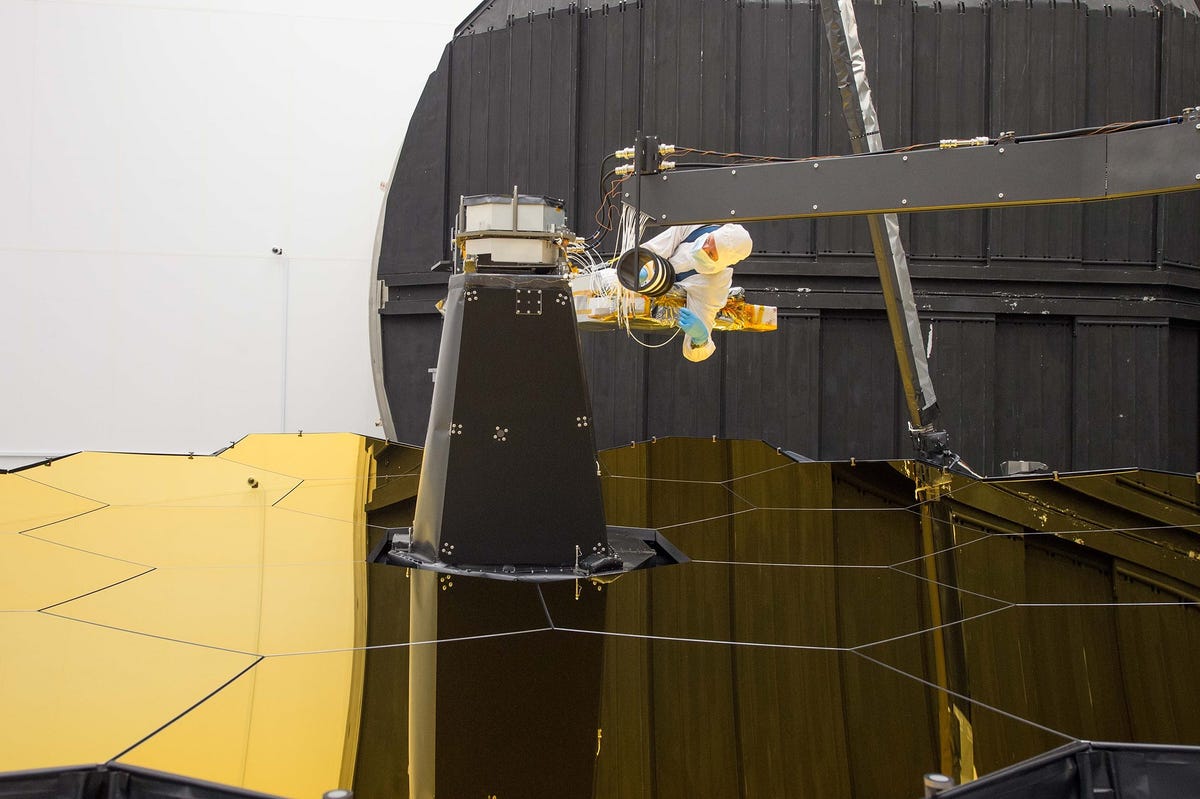
Ball Aerospace optical engineer Larkin Carey connects fiber optics to the AOS Source Plate Assembly above Webb's primary mirror.
NASA/Desiree StoverNIRCam can sense heat signatures to communicate with ground control about Webb's mirror orientation. While some of the alignment will be done autonomously with preprogrammed algorithms, Nordt says, other parts will likely be done manually.
Basically, we must protect NIRCam at all costs.
Delays, data and destiny
"Every time we've had either a failure or something we didn't understand, we stopped to look at it and say, OK, we really need to get this right because we can't fix it up in orbit," Nordt said about Webb's busy record of launch delays.
A recent delay happened just a week ahead of the earlier lift-off date of Dec. 22. According to NASA, it had to do with a communications error (NIRCam remains safe and sound, according to Nordt.) But upon pushing the date to Christmas Eve, officials have added yet another day to the countdown following a Dec. 21 press conference. Now, they're aiming for a Christmas day launch.
"My husband consoled me and he said, 'That's OK, it's OK, it's better to get it right. If it costs us one Christmas, that's not the end of the world,'" she said. Rather than charging forward, the team is being extra cautious to ensure mission success. Now NASA is focused on Christmas Day for launch.
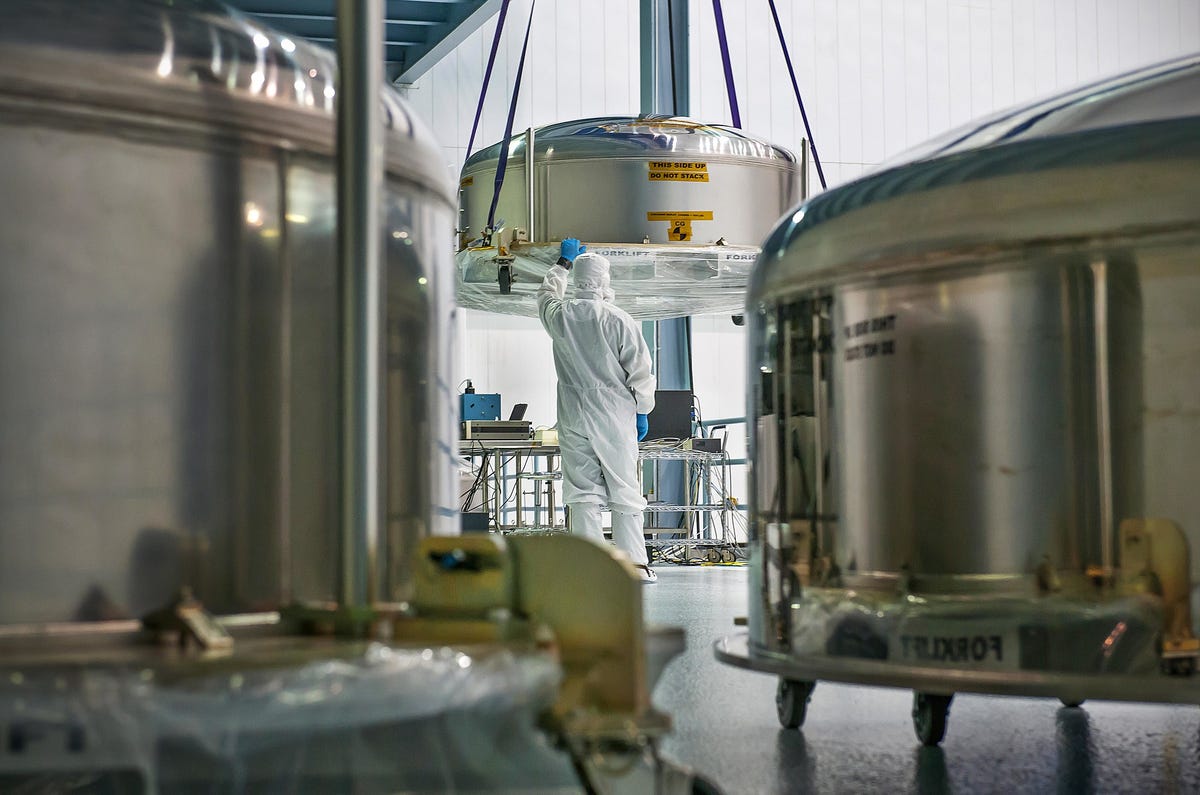
An engineer guides one of the canisters containing a mirror segment. Two other containers housing mirrors appear in the foreground.
NASA/Desiree StoverWhen Webb finally does launch, here's the gist of what'll go down: After the rocket blasts off the pad and the tip holding Webb opens up, "within the first day, we expect to get signals back that it has deployed the solar panels and that it is power positive," Nordt said.
"That means that the solar arrays are deployed, the communications antenna is deployed and it's talking to us. That'll be the first 'yay.'"

Researchers testing Webb's solar arrays.
NASA/Chris GunnThen the telescope's sunshield will unfold and be set in place. This feature, about the size of a tennis court, will guard Webb against the heat of the sun and Earth to make sure NIRCam isn't receiving unwanted heat signals.
That'll take about a month.
"That may be one of the biggest challenges in orbit," Nordt said. "If the sunshield doesn't work, we don't get cold enough and none of the detectors will work."
Next, the mirror-unfurling process will occur, followed by the NIRCam-driven oscillations to align every segment perfectly.
If all goes as expected, Webb will hang out at a point within Earth's orbit known as the second Lagrange point, or L2. This point is special because it allows Webb a clear view of the universe, but the sunshield can still protect it from the heat of the Earth and sun.

The Webb's sunshield comprises five of these layers, each of which has to be precisely spaced from the others.
Northrop Grumman Aerospace SystemsAnd after about a decade, when Webb's fuel runs out, the telescope's carcass will remain there for a very long time, Nordt said. "Probably longer than humans will live on Earth."
Nordt expects the first usable scientific data from Webb will arrive in May of next year. Reflecting on her first memories of working on the trailblazing scope, she said with a laugh, she guesses "it wasn't impossibly hard, because we did it. But it was a big challenge."
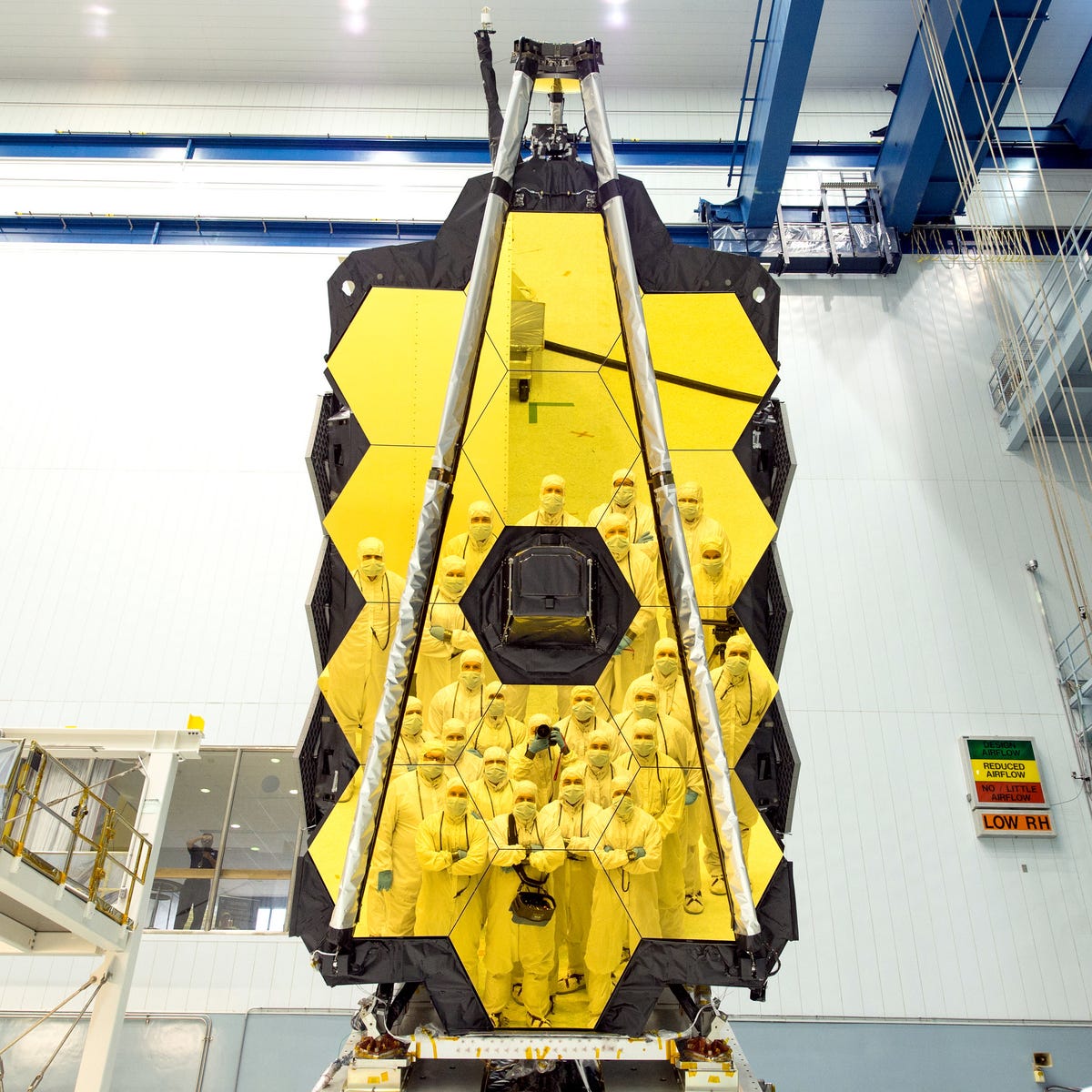
A group photo of engineers and technicians in the cleanroom at NASA Goddard, captured in the spring of 2017, before the telescope was transported to NASA Johnson for cryogenic testing.
NASA/Desiree StoverSource
Tags:
- Nasa James Webb Telescope Launch Date
- James Webb Nasa Telescope
- The James Webb Telescope Launch
- Launching Of James Webb Space Telescope
- Has Nasa Launched The James Webb Telescope
- Nasa James Webb Telescope Images 4k
- Nasa James Webb Telescope
- Nasa James Webb Images
- Nasa James Webb
- Nasa James Webb Telescope Launch
- Nasa James
- Nasa James Webb Space Telescope Images
